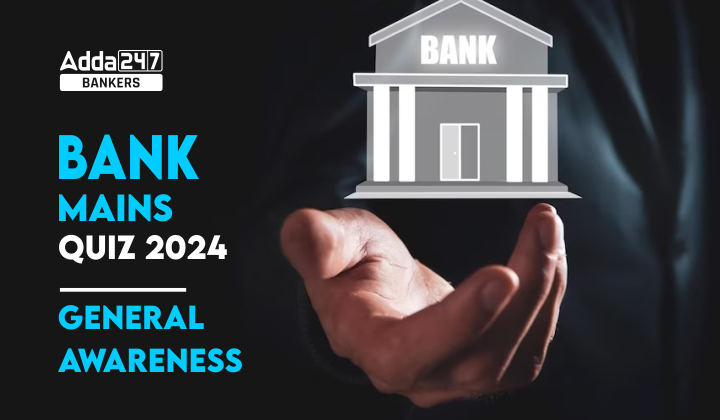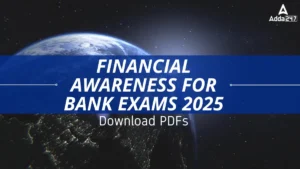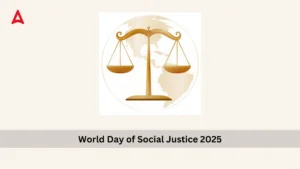Q1. What is the primary purpose of Open Market Operations (OMOs) conducted by central banks?
(a) To regulate international trade and manage exchange rates.
(b) To control the money supply and influence interest rates in the economy.
(c) To directly influence the stock market and corporate investments.
(d) To manage the national debt and reduce government borrowing.
(e) To oversee commercial banking operations and ensure financial stability.
Q2. When was the first Payment Bank, Airtel Payments Bank, established in India?
(a) January 2015
(b) January 2016
(c) January 2017
(d) January 2018
(e) January 2019
Q3. As per the recent announcement by the Reserve Bank of India, what compensation will Credit Information Companies (CICs) be required to pay customers for any delays in updating or rectifying their credit information?
(a) Rs 50 per day
(b) Rs 100 per day
(c) Rs 150 per day
(d) Rs 200 per day
(e) Rs 250 per day
Q4. What is the new minimum deposit amount set by the Reserve Bank of India (RBI) for offering term deposits (TDs) without a premature withdrawal option?
(a) ₹30 lakh
(b) ₹50 lakh
(c) ₹75 lakh
(d) ₹1 crore
(e) ₹2 crore
Q5. A Payment Aggregator, also known as a merchant aggregator, is a third-party service provider that enables merchants to accept payments from customers by seamlessly integrating payment options into their websites or apps. Under which Act are Payment Aggregators in India incorporated?
(a) The Reserve Bank of India Act, 1934
(b) The Banking Regulation Act, 1949
(c) The Indian Contract Act, 1872
(d) The Companies Act, 2013
(e) The Information Technology Act, 2000
Q6. QRTAs are required to establish a Business Continuity Plan (BCP) and Disaster Recovery Site (DRS) to ensure the continuity of their operations and maintain data and transaction integrity. What does QRTA stand for?
(a) Qualified Regulatory and Trading Agencies
(b) Quantitative Research and Technical Associates
(c) Qualified Registrars and Transfer Agents
(d) Quality Review and Transaction Analysts
(e) Quick Response and Trading Assistants
Q7. What is the role of a Mutual Fund in the context of investments?
(a) It provides individual financial advice to investors.
(b) It acts as a personal savings account.
(c) It is a pool of money managed by a professional Fund Manager, invested in various securities.
(d) It guarantees a fixed return on investments.
(e) It is a government scheme for retirement savings.
Q8. What is the primary function of Reserve Bank Information Technology Private Limited (ReBIT)?
(a) Managing banking sector interest rates
(b) Printing of banknotes
(c) Ensuring cybersecurity in the banking sector
(d) Regulating microfinance activities
(e) Managing mutual funds
Q9. What was the impact of integrating the National Financial Switch (NFS) with the Unified Payments Interface (UPI) on digital banking in India?
(a) Enabled international fund transfers via UPI
(b) Resulted in the gradual discontinuation of traditional ATM cards
(c) Facilitated real-time fund transfers between bank accounts via ATMs
(d) Seamlessly integrated mobile and ATM transactions
(e) Increased the limit for contactless transactions
Q10. What is the term used for banking services that enable customers to conduct transactions remotely, without the need to visit a physical bank branch, utilizing services like telebanking and remote banking facilities?
(a) Digital banking
(b) Virtual banking
(c) Electronic banking
(d) Online banking
(e) Automated banking
Solutions
S1. Ans. (b)
Sol. OMOs involve the buying and selling of government securities in the open market by central banks.
The main goal of these operations is to control the amount of money in circulation and to influence the prevailing interest rates.
This approach is critical for achieving broader macroeconomic objectives like controlling inflation and managing employment levels.
S2. Ans. (c)
Sol. Airtel Payments Bank holds the distinction of being the first Payment Bank in India. It was established in January 2017, marking a significant development in the Indian banking and financial sector.
Payment Banks are a new model of banks conceptualized by the Reserve Bank of India (RBI).
These banks can accept a restricted deposit, which is currently limited to ₹2 lakh per customer, and offer remittance services, mobile payments/transfers/purchases, and other banking services like ATM/debit cards, net banking, and third-party fund transfers.
S3. Ans. (b)
Sol. According to this regulation, CICs are mandated to compensate customers at the rate of Rs 100 per day for any delays in updating or rectifying their credit information.
The Reserve Bank of India has introduced a new regulation concerning Credit Information Companies (CICs), aimed at ensuring the timely updating and rectification of credit information.
This measure is part of a broader initiative to enhance the accountability of CICs and to protect the rights of consumers.
S4. Ans. (d)
Sol. The Reserve Bank of India (RBI) has revised the guidelines concerning term deposits (TDs) without a premature withdrawal option, also known as non-callable TDs.
In this recent change, the RBI has increased the minimum deposit amount required for offering these non-callable term deposits.
Previously, the threshold was ₹15 lakh, but it has now been raised to ₹1 crore.
This means that term deposits up to and including ₹1 crore accepted from individuals will mandatorily come with the option for premature withdrawal.
This revision aims to provide more flexibility and options for individual depositors, ensuring they have access to their funds if needed before the maturity of the deposit.
S5. Ans. (d)
Sol. Payment Aggregators in India are incorporated under the Companies Act of 2013.
This Act governs the incorporation, regulation, and dissolution of companies in India and provides the legal framework within which these companies operate.
S6. Ans. (c)
Sol. QRTAs stands for “Qualified Registrars and Transfer Agents.”
SEBI, the capital markets regulator, has issued guidelines to enhance the governance of Qualified Registrars and Transfer Agents (QRTAs) for handling disruptions and improving preparedness.
QRTAs are required to establish a Business Continuity Plan (BCP) and Disaster Recovery Site (DRS) to ensure the continuity of their operations and maintain data and transaction integrity.
Additionally, QRTAs must have a Near Site (NS) to prevent data loss, and they play a crucial role in the smooth functioning of the securities market.
S7. Ans. (c)
Sol. A mutual fund is essentially a pool of money that is managed by a professional Fund Manager.
It functions as a trust that gathers funds from multiple investors who have a common investment goal.
This collected money is then invested in a diversified portfolio which may include equities, bonds, money market instruments, and other securities.
The income or gains generated from these investments are proportionately distributed among the investors, after deducting any applicable expenses and levies.
This distribution is based on the Net Asset Value (NAV) of the mutual fund.
S8. Ans. (c)
Sol. ReBIT primarily focuses on cybersecurity in the banking sector, ensuring the protection of the Indian banking system against cyber threats, fraud, and attacks.
ReBIT, established by the Reserve Bank of India (RBI), focuses on IT and cybersecurity-related strategies, policies, and programs to protect and strengthen the technological infrastructure of the Indian banking system.
S9. Ans. (d)
Sol. The integration of the National Financial Switch (NFS) with the Unified Payments Interface (UPI) significantly enhanced digital banking in India by seamlessly integrating mobile and ATM transactions.
This integration has allowed users to conduct UPI transactions using their mobile devices at ATMs, thereby bridging the gap between mobile-based and ATM-based banking services.
S10. Ans. (c)
Sol. The term “Electronic banking” refers to banking services that allow customers to perform banking transactions without physically visiting a bank branch.
This includes services such as telebanking and remote banking facilities, which provide a convenient way for customers to manage their finances from remote locations using electronic means.
This has become an essential part of the banking industry, offering flexibility and accessibility to banking services.



 Financial Awareness for Bank Exams 2025,...
Financial Awareness for Bank Exams 2025,...
 Zero Discrimination Day is Observed Ever...
Zero Discrimination Day is Observed Ever...
 World Day of Social Justice 2025, Theme,...
World Day of Social Justice 2025, Theme,...




